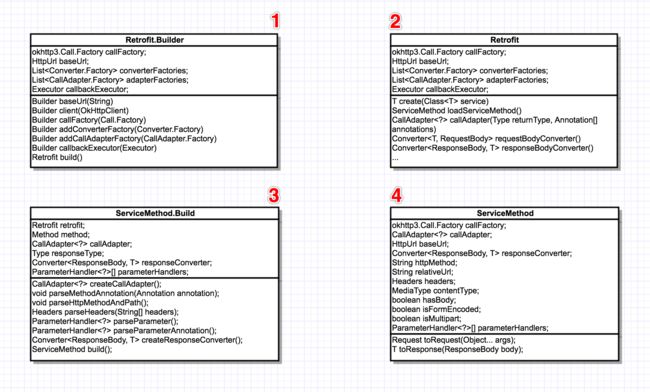- c++11新特性之条件变量
要好好养胃
c++11c++开发语言
文章目录条件变量1condition_variable1.1成员函数wait()2condition_variable_any条件变量互斥锁:放行一个线程,阻塞N个线程条件变量:放心n个线程,阻塞N个线程,主要使用场景:生产者-消费者模型1condition_variable只能使用独占的互斥锁,并且还得配合unique_lock1.1成员函数wait()//①voidwait(unique_lo
- c++11新特性之线程异步
要好好养胃
c++11c++开发语言算法linux服务器
文章目录线程异步1std::future模板类1.1构造1.2成员函数2std::promise2.1构造2.2成员函数get_futureset_valueset_value_at_thread_exit2.3使用3std::packaged_task类使用4std::async函数不指定策略直接使用指定策略总结线程异步定义于头文件#include1std::future模板类它是用来线程异步的
- ROS学习笔记之深度相机仿真、小结
要好好养胃
ROS学习笔记人工智能机器学习c++
通过Gazebo模拟kinect摄像头,并在Rviz中显示kinect摄像头数据。实现流程:kinect摄像头仿真基本流程:已经创建完毕的机器人模型,编写一个单独的xacro文件,为机器人模型添加kinect摄像头配置;将此文件集成进xacro文件;启动Gazebo,使用Rviz显示kinect摄像头信息。1.Gazebo仿真Kinect1.1新建Xacro文件,配置kinetic传感器信息//这
- ROS学习笔记之摄像头仿真及显示
要好好养胃
ROS学习笔记人工智能机器学习c++
通过Gazebo模拟摄像头传感器,并在Rviz中显示摄像头数据。实现流程:摄像头仿真基本流程:已经创建完毕的机器人模型,编写一个单独的xacro文件,为机器人模型添加摄像头配置;将此文件集成进xacro文件;启动Gazebo,使用Rviz显示摄像头信息。1.Gazebo仿真摄像头1.1新建Xacro文件,配置摄像头传感器信息有几个要自行修改的地方,基本设置和laser有相同的部分,不做赘述。//实
- Android 高频面试必问之Java基础
2401_83641443
程序员android面试java
BootstrapClassLoader:Bootstrap类加载器负责加载rt.jar中的JDK类文件,它是所有类加载器的父加载器。Bootstrap类加载器没有任何父类加载器,如果调用String.class.getClassLoader(),会返回null,任何基于此的代码会抛出NUllPointerException异常,因此Bootstrap加载器又被称为初始类加载器。ExtClassL
- Debezium系列之:使用Debezium采集oceanbase数据库
快乐骑行^_^
debeziumDebezium系列采集oceanbase数据库
Debezium系列之:使用Debezium采集oceanbase数据库一、oceanbase数据库二、安装OceanBase三、安装oblogproxy四、基于Docker的简单采集案例五、生产实际应用案例Debezium是一个开源的分布式平台,用于监控数据库变化和捕捉数据变动事件,并以事件流的形式导出到各种消费者。Debezium基于ApacheKafka实现,并支持多种数据库系统。一、oce
- 【数据结构之树】
武帝为此
数据结构数据结构
文章目录一、前言二、树的基本概念1.什么是树?2.树的常见分类(1)普通树(2)二叉树(BinaryTree)(3)满二叉树(FullBinaryTree)(4)完全二叉树(CompleteBinaryTree)(5)二叉搜索树(BinarySearchTree,BST)(6)平衡二叉树(AVL树)(7)红黑树(Red-BlackTree)三、树的基本操作及代码示例1.二叉树的基本实现(C++)运
- 结构型模式之桥接模式:解耦抽象和实现
菜就多练少说
设计模式桥接模式java网络
在面向对象设计中,我们经常遇到需要扩展某些功能,但又不能修改现有代码的情况。为了避免继承带来的复杂性和维护难度,桥接模式(BridgePattern)应运而生。桥接模式是一种结构型设计模式,旨在解耦抽象部分和实现部分,使得两者可以独立变化。通过桥接模式,可以避免由于功能扩展而导致的类爆炸问题。本文将详细介绍桥接模式,讲解其概念、应用场景、优缺点,并通过Java代码示例帮助大家理解如何在实际开发中使
- 远程调试Python脚本之ptvsd
工头阿乐
PyTorch深度学习python开发语言
深度学习文章目录深度学习前言前言有时候需要远程调试Python脚本,怎么办呢…以下这段代码用于远程调试Python脚本,特别是通过VisualStudioCode(VSCode)的远程调试功能。它会在指定的服务器IP和端口上等待调试器的连接。#检查是否提供了服务器IP和端口ifargs.server_ipandargs.server_port:#远程调试-参见https://code.visual
- 图像处理之白平衡(附源码)
FPGA工程狮-阿水
Python图像处理图像处理人工智能pythonisp
图像处理之白平衡(附源码)概要白平衡(WhiteBalance)是图像处理和摄影中的一种技术,旨在消除由于光源色温差异导致的颜色偏差,使得图像中的白色和其他颜色呈现出自然、真实的效果。基本概念白平衡是调整图像中各个颜色通道(红色、绿色和蓝色)的亮度和色彩平衡,以消除由不同光源(如日光、白炽灯、荧光灯等)产生的色偏。其目的是让图像看起来像是在中性白光下拍摄的,从而确保图像中的白色看起来确实是白色,其
- 【加密】常用加密算法
llzcxdb
java开发语言
非对称加密非对称加密是一种加密技术,也称为公钥加密。它使用一对密钥:公钥和私钥。公钥可以向任何人公开,用于加密信息,而私钥则是保密的,用于解密信息。这种加密方法确保了数据的安全传输,因为只有拥有对应私钥的人才能解密通过公钥加密的信息。非对称加密的一个主要特点是,即使公钥被他人获取,他们也无法解密密文,因为缺乏与之配对的私钥。常见的非对称加密算法包括RSA、椭圆曲线加密(ECC)和数字签名算法(DS
- 机器学习之向量化
珠峰日记
AI理论与实践机器学习人工智能
文章目录向量化是什么为什么要向量化提升计算效率简化代码与增强可读性适配模型需求怎么做向量化数据预处理特征提取特征选择向量构建机器学习与深度学习中向量化的区别数据特征提取方式机器学习深度学习模型结构与复杂度机器学习深度学习计算资源需求机器学习深度学习数据规模适应性机器学习深度学习向量化是什么向量化是把数据转化为向量形式进行表示与处理的过程。在机器学习与深度学习的范畴内,现实中的各类数据,像文本、图像
- 【脑洞小剧场】零帧起手创业小公司之 新人入职的一天
Foyo Designer
技术职场小剧职场和发展程序人生学习方法改行学it创业创新远程工作程序员创富
点击查看小剧场合集https://blog.csdn.net/foyodesigner/category_12896948.html阳光明媚的早晨,段萌儿怀揣着对新工作的无限憧憬,踏入了这家充满未知的小公司。然而,她万万没想到,第一天上班就迎来了一场“惊悚”之旅。场景一:段萌儿的“惊悚”发现段萌儿,新入职的前端工程师,一早便迫不及待地打开了公司的代码库,想要一窥项目的“真容”。然而,当她看到代码库
- 软件设计师之编译原理核心知识深度剖析:从词法到语法分析
一杯年华@编程空间
软考中级软考中级
软件设计师之编译原理核心知识深度剖析:从词法到语法分析在软件开发的知识体系中,编译原理是极为关键的一环,它就像一座桥梁,连接着人类可读的程序代码与计算机能够执行的机器指令。我写这篇博客的目的,是希望和大家一起学习进步,深入剖析编译原理中的词法分析和语法分析等核心知识,让这些复杂的概念变得通俗易懂,助力大家在软件设计领域更上一层楼。一、词法分析相关知识(一)正规表达式与正规集正规表达式是描述词法规则
- 【 <二> 丹方改良:Spring 时代的 JavaWeb】之 Spring Boot 的起步依赖:快速构建 JavaWeb 项目
Foyo Designer
springspringbootjavaSpringDataJPAJUnit
点击此处查看合集https://blog.csdn.net/foyodesigner/category_12907601.html?fromshare=blogcolumn&sharetype=blogcolumn&sharerId=12907601&sharerefer=PC&sharesource=FoyoDesigner&sharefrom=from_link一、起步依赖:SpringBoo
- Spring之Bean生命周期源码解析-一文掌握(一)
小徐Chao努力
源码分析springjava后端
Spring最重要的功能就是帮助程序员创建对象(也就是IOC),而启动Spring就是为创建Bean对象做准备,所以我们先明白Spring到底是怎么去创建Bean的,也就是先弄明白Bean的生命周期。Bean的生命周期就是指:在Spring中,一个Bean是如何生成的,如何销毁的Bean的生成过程1.生成BeanDefinitionSpring启动的时候会进行扫描,会先调用org.springfr
- Spring之底层架构核心概念解析
小徐Chao努力
源码分析springjava后端设计模式
BeanDefinitionBeanDefinition表示Bean定义,BeanDefinition中存在很多属性用来描述一个Bean的特点。比如:class,表示Bean类型scope,表示Bean作用域,单例或原型等lazyInit:表示Bean是否是懒加载initMethodName:表示Bean初始化时要执行的方法destroyMethodName:表示Bean销毁时要执行的方法还有很多
- goldengate sqlserver mysql_Oracle GoldenGate 之 SqlServer数据同步到Mysql数据库
Huawei_Germany
goldengatesqlservermysql
C:\OGG>INSTALLADDSERVICEService'GGSMGR'created.Installprogramterminatednormally.C:\OGG>配置ODBC数据源MicrosoftSQLServerODBC驱动程序版本06.01.7601数据源名称:oa_test数据源描述:服务器:WIN-UGCMTTOTKE7数据库:(Default)语言:(Default)翻译字
- 《我的Python觉醒之路》之转型Python(十五)——控制流
Python破壁人手记
python服务器网络开发语言java
[今天是2025年3月17日,继续复习第一章节、第二章节的内容]《我的Python觉醒之路》之转型Python(十四)——控制流
- AI 创业团队:技术人才与商业人才的完美搭配
yaxin0765
人工智能
目录一、技术人才的核心价值二、商业人才的关键作用三、实现完美搭配的策略在AI创业的赛道上,一个优秀的团队是决定企业成败的关键因素。而在这个团队中,技术人才与商业人才的完美搭配,如同鸟之双翼、车之两轮,缺一不可。他们各自发挥独特优势,相互协作,共同推动AI创业企业驶向成功的彼岸。一、技术人才的核心价值奠定技术根基:技术人才是AI创业企业的技术基石。他们精通各类AI算法、编程语言和开发框架,能够搭建起
- 【Python】Flask与Django对比详解:教你如何选择最适合你的Web框架
小芬熊
面试学习路线阿里巴巴pythonflaskdjango
文章目录引言:为何选择PythonWeb框架?Flask简介:轻量级的灵活之选??Flask的核心特点Django简介:全能型的强大框架??Django的核心特点Flask与Django的详细对比架构设计功能与扩展性性能与效率模板系统ORM(对象关系映射)详细对比表格适用场景总结案例分享:如何选择适合的框架小李的博文项目:选择Flask??小张的电商平台:选择Django??了解更多AI内容结论:
- 深入浅出 -- 系统架构之负载均衡Nginx配置SSL证书
xiaoli8748_软件开发
系统架构系统架构负载均衡nginx
一、Nginx配置SSL证书随着越来越多的网站接入HTTPS,因此Nginx中仅配置HTTP还不够,往往还需要监听443端口的请求,但在上篇《HTTP/HTTPS》中谈到过,HTTPS为了确保通信安全,所以服务端需配置对应的数字证书,当项目使用Nginx作为网关时,那么证书在Nginx中也需要配置,接下来简单聊一下关于SSL证书配置过程:①先去CA机构或从云控制台中申请对应的SSL证书,审核通过后
- 全网测评:2025年最值得中小企业入局的AI无人直播软件花落谁家?
V_13135861102
人工智能
全网测评:2025年最值得中小企业入局的AI无人直播软件花落谁家?在数字化时代,人工智能技术的快速发展为各行各业带来了深刻的变革。直播电商领域也迎来了前所未有的机遇,AI无人直播软件应运而生,逐步改变着传统电商和直播行业的运营模式。对于预算有限、希望实现高效营销的中小企业而言,选择一款合适的AI无人直播软件显得尤为重要。本文将测评几款热门的AI无人直播软件,帮助中小企业找到最适合自己的入局之选。一
- Qt之自定义界面组件 一
此刻我在家里喂猪呢
qtqt
通过qt中的painter绘图事件绘制一个电池电量图的变化。效果如下图创建一个基于界面widget工程,在wdiget界面添加一个widget界面,将添加的widget界面的类提升为Tbattery.在Tbattery类中重写painEvent电池电量代码文件目录结构主要部分代码//Tbattery.cpp#include"tbattery.h"#include#includeTbattery::
- 高薪程序员&面试题精讲系列131之Eureka如何实现高可用?自我保护机制是怎么回事?
一一哥Sun
Java高薪面试题精讲系列eurekaspringcloudjava
一.面试题及剖析1.今日面试题你熟悉Eureka吗?服务治理是怎么回事?Eureka的服务治理包含哪些内容?自我保护机制是怎么回事?Eureka怎么实现高可用?Eureka挂了,服务间还能通信吗?Eureka的工作原理是怎么样的?2.题目剖析在上一篇文章中,
- 软件测试肖sir__接口测试之基本介绍(2)
金牌软件测试培训师肖sir
接口
接口测试之基本介绍搭建环境cms:url:http://cms.duoceshi.cn/cms/manage/login.do一、接口基本介绍1、什么是接口测试?定义:接口统称api,程序与程序之间的数据交换;模块与模块之间的数据交换;2、为什么做接口?(1)能够尽早介入测试;(2)能测试功能无法测试的场景(3)节约时间;(先进行接口测试,在进行功能测试,能节省测试时间)3、如何做接口?通过工具p
- 蓝桥杯嵌入式之按位点灯 按键长按、短按、双击操作(附源码)
啦啦啦1021
MCU外设常用器件分享蓝桥杯单片机stm32
蓝桥杯嵌入式之按位点灯按键长按、短按、双击操作(附源码)GPIO引脚配置原理STM32的每个IO端口都有7个寄存器来控制,分别是:CRH、CHL、ODR、IDR、BSRR、BRR、LCLK,加上APB2外设时钟使能寄存器ACC->APB2ENR就可以实现对IO口的所有操作了。不管是库函数还是HAL库究其根源都是通过控制这几个寄存器实现的。各个寄存器功能如下:CRH和CRL寄存器:IO口的模式和输出
- flutter 专题 九十 三 Flutter开发之基础Widgets
leluckys
Flutter面试与实战flutterjavascript命令模式
Widgets概念Flutter里有一个非常重要的核心理念:一切皆为组件,Flutter的所有元素都是由控件构成的。与原生开发中控件所代表的含义不同,Flutter中widget的概念更加广泛,它不仅可以表示UI元素,也可以表示一些功能性的组件,如用于手势检测的GestureDetectorwidget、用于应用主题数据传递的Theme等等。而原生开发中的控件通常只是指UI元素。由于Flutter
- OpenCV图像拼接(2)特征查找与图像匹配之基于仿射变换的图像匹配的一个类cv::detail::AffineBestOf2NearestMatcher
村北头的码农
OpenCVopencv人工智能计算机视觉
操作系统:ubuntu22.04OpenCV版本:OpenCV4.9IDE:VisualStudioCode编程语言:C++11算法描述cv::detail::AffineBestOf2NearestMatcher是OpenCV库中用于实现基于仿射变换的图像匹配的一个类。这个类主要用于在图像拼接流程中,寻找图像间的对应关系,并假设图像间存在仿射变换(即考虑缩放、旋转和平移的变换)。它通过使用“最佳
- c++STL常用算法之排序算法——全面总结(附案例解析)(二十四)
磊磊cpp
C/C++STL详细教学C++STL
这里有C++STL——全面总结详细教程(附案例解析)(持续更新中)常用排序算法学习目标:掌握常用的排序算法算法简介:sort//对容器内元素进行排序random_shuffle//洗牌指定范围内的元素随机调整次序merge//容器元素合并,并存储到另一容器中reverse//反转指定范围的元素sort功能描述:对容器内元素进行排序函数原型:sort(iteratorbeg,iteratorend,
- 关于旗正规则引擎中的MD5加密问题
何必如此
jspMD5规则加密
一般情况下,为了防止个人隐私的泄露,我们都会对用户登录密码进行加密,使数据库相应字段保存的是加密后的字符串,而非原始密码。
在旗正规则引擎中,通过外部调用,可以实现MD5的加密,具体步骤如下:
1.在对象库中选择外部调用,选择“com.flagleader.util.MD5”,在子选项中选择“com.flagleader.util.MD5.getMD5ofStr({arg1})”;
2.在规
- 【Spark101】Scala Promise/Future在Spark中的应用
bit1129
Promise
Promise和Future是Scala用于异步调用并实现结果汇集的并发原语,Scala的Future同JUC里面的Future接口含义相同,Promise理解起来就有些绕。等有时间了再仔细的研究下Promise和Future的语义以及应用场景,具体参见Scala在线文档:http://docs.scala-lang.org/sips/completed/futures-promises.html
- spark sql 访问hive数据的配置详解
daizj
spark sqlhivethriftserver
spark sql 能够通过thriftserver 访问hive数据,默认spark编译的版本是不支持访问hive,因为hive依赖比较多,因此打的包中不包含hive和thriftserver,因此需要自己下载源码进行编译,将hive,thriftserver打包进去才能够访问,详细配置步骤如下:
1、下载源码
2、下载Maven,并配置
此配置简单,就略过
- HTTP 协议通信
周凡杨
javahttpclienthttp通信
一:简介
HTTPCLIENT,通过JAVA基于HTTP协议进行点与点间的通信!
二: 代码举例
测试类:
import java
- java unix时间戳转换
g21121
java
把java时间戳转换成unix时间戳:
Timestamp appointTime=Timestamp.valueOf(new SimpleDateFormat("yyyy-MM-dd HH:mm:ss").format(new Date()))
SimpleDateFormat df = new SimpleDateFormat("yyyy-MM-dd hh:m
- web报表工具FineReport常用函数的用法总结(报表函数)
老A不折腾
web报表finereport总结
说明:本次总结中,凡是以tableName或viewName作为参数因子的。函数在调用的时候均按照先从私有数据源中查找,然后再从公有数据源中查找的顺序。
CLASS
CLASS(object):返回object对象的所属的类。
CNMONEY
CNMONEY(number,unit)返回人民币大写。
number:需要转换的数值型的数。
unit:单位,
- java jni调用c++ 代码 报错
墙头上一根草
javaC++jni
#
# A fatal error has been detected by the Java Runtime Environment:
#
# EXCEPTION_ACCESS_VIOLATION (0xc0000005) at pc=0x00000000777c3290, pid=5632, tid=6656
#
# JRE version: Java(TM) SE Ru
- Spring中事件处理de小技巧
aijuans
springSpring 教程Spring 实例Spring 入门Spring3
Spring 中提供一些Aware相关de接口,BeanFactoryAware、 ApplicationContextAware、ResourceLoaderAware、ServletContextAware等等,其中最常用到de匙ApplicationContextAware.实现ApplicationContextAwaredeBean,在Bean被初始后,将会被注入 Applicati
- linux shell ls脚本样例
annan211
linuxlinux ls源码linux 源码
#! /bin/sh -
#查找输入文件的路径
#在查找路径下寻找一个或多个原始文件或文件模式
# 查找路径由特定的环境变量所定义
#标准输出所产生的结果 通常是查找路径下找到的每个文件的第一个实体的完整路径
# 或是filename :not found 的标准错误输出。
#如果文件没有找到 则退出码为0
#否则 即为找不到的文件个数
#语法 pathfind [--
- List,Set,Map遍历方式 (收集的资源,值得看一下)
百合不是茶
listsetMap遍历方式
List特点:元素有放入顺序,元素可重复
Map特点:元素按键值对存储,无放入顺序
Set特点:元素无放入顺序,元素不可重复(注意:元素虽然无放入顺序,但是元素在set中的位置是有该元素的HashCode决定的,其位置其实是固定的)
List接口有三个实现类:LinkedList,ArrayList,Vector
LinkedList:底层基于链表实现,链表内存是散乱的,每一个元素存储本身
- 解决SimpleDateFormat的线程不安全问题的方法
bijian1013
javathread线程安全
在Java项目中,我们通常会自己写一个DateUtil类,处理日期和字符串的转换,如下所示:
public class DateUtil01 {
private SimpleDateFormat dateformat = new SimpleDateFormat("yyyy-MM-dd HH:mm:ss");
public void format(Date d
- http请求测试实例(采用fastjson解析)
bijian1013
http测试
在实际开发中,我们经常会去做http请求的开发,下面则是如何请求的单元测试小实例,仅供参考。
import java.util.HashMap;
import java.util.Map;
import org.apache.commons.httpclient.HttpClient;
import
- 【RPC框架Hessian三】Hessian 异常处理
bit1129
hessian
RPC异常处理概述
RPC异常处理指是,当客户端调用远端的服务,如果服务执行过程中发生异常,这个异常能否序列到客户端?
如果服务在执行过程中可能发生异常,那么在服务接口的声明中,就该声明该接口可能抛出的异常。
在Hessian中,服务器端发生异常,可以将异常信息从服务器端序列化到客户端,因为Exception本身是实现了Serializable的
- 【日志分析】日志分析工具
bit1129
日志分析
1. 网站日志实时分析工具 GoAccess
http://www.vpsee.com/2014/02/a-real-time-web-log-analyzer-goaccess/
2. 通过日志监控并收集 Java 应用程序性能数据(Perf4J)
http://www.ibm.com/developerworks/cn/java/j-lo-logforperf/
3.log.io
和
- nginx优化加强战斗力及遇到的坑解决
ronin47
nginx 优化
先说遇到个坑,第一个是负载问题,这个问题与架构有关,由于我设计架构多了两层,结果导致会话负载只转向一个。解决这样的问题思路有两个:一是改变负载策略,二是更改架构设计。
由于采用动静分离部署,而nginx又设计了静态,结果客户端去读nginx静态,访问量上来,页面加载很慢。解决:二者留其一。最好是保留apache服务器。
来以下优化:
- java-50-输入两棵二叉树A和B,判断树B是不是A的子结构
bylijinnan
java
思路来自:
http://zhedahht.blog.163.com/blog/static/25411174201011445550396/
import ljn.help.*;
public class HasSubtree {
/**Q50.
* 输入两棵二叉树A和B,判断树B是不是A的子结构。
例如,下图中的两棵树A和B,由于A中有一部分子树的结构和B是一
- mongoDB 备份与恢复
开窍的石头
mongDB备份与恢复
Mongodb导出与导入
1: 导入/导出可以操作的是本地的mongodb服务器,也可以是远程的.
所以,都有如下通用选项:
-h host 主机
--port port 端口
-u username 用户名
-p passwd 密码
2: mongoexport 导出json格式的文件
- [网络与通讯]椭圆轨道计算的一些问题
comsci
网络
如果按照中国古代农历的历法,现在应该是某个季节的开始,但是由于农历历法是3000年前的天文观测数据,如果按照现在的天文学记录来进行修正的话,这个季节已经过去一段时间了。。。。。
也就是说,还要再等3000年。才有机会了,太阳系的行星的椭圆轨道受到外来天体的干扰,轨道次序发生了变
- 软件专利如何申请
cuiyadll
软件专利申请
软件技术可以申请软件著作权以保护软件源代码,也可以申请发明专利以保护软件流程中的步骤执行方式。专利保护的是软件解决问题的思想,而软件著作权保护的是软件代码(即软件思想的表达形式)。例如,离线传送文件,那发明专利保护是如何实现离线传送文件。基于相同的软件思想,但实现离线传送的程序代码有千千万万种,每种代码都可以享有各自的软件著作权。申请一个软件发明专利的代理费大概需要5000-8000申请发明专利可
- Android学习笔记
darrenzhu
android
1.启动一个AVD
2.命令行运行adb shell可连接到AVD,这也就是命令行客户端
3.如何启动一个程序
am start -n package name/.activityName
am start -n com.example.helloworld/.MainActivity
启动Android设置工具的命令如下所示:
# am start -
- apache虚拟机配置,本地多域名访问本地网站
dcj3sjt126com
apache
现在假定你有两个目录,一个存在于 /htdocs/a,另一个存在于 /htdocs/b 。
现在你想要在本地测试的时候访问 www.freeman.com 对应的目录是 /xampp/htdocs/freeman ,访问 www.duchengjiu.com 对应的目录是 /htdocs/duchengjiu。
1、首先修改C盘WINDOWS\system32\drivers\etc目录下的
- yii2 restful web服务[速率限制]
dcj3sjt126com
PHPyii2
速率限制
为防止滥用,你应该考虑增加速率限制到您的API。 例如,您可以限制每个用户的API的使用是在10分钟内最多100次的API调用。 如果一个用户同一个时间段内太多的请求被接收, 将返回响应状态代码 429 (这意味着过多的请求)。
要启用速率限制, [[yii\web\User::identityClass|user identity class]] 应该实现 [[yii\filter
- Hadoop2.5.2安装——单机模式
eksliang
hadoophadoop单机部署
转载请出自出处:http://eksliang.iteye.com/blog/2185414 一、概述
Hadoop有三种模式 单机模式、伪分布模式和完全分布模式,这里先简单介绍单机模式 ,默认情况下,Hadoop被配置成一个非分布式模式,独立运行JAVA进程,适合开始做调试工作。
二、下载地址
Hadoop 网址http:
- LoadMoreListView+SwipeRefreshLayout(分页下拉)基本结构
gundumw100
android
一切为了快速迭代
import java.util.ArrayList;
import org.json.JSONObject;
import android.animation.ObjectAnimator;
import android.os.Bundle;
import android.support.v4.widget.SwipeRefreshLayo
- 三道简单的前端HTML/CSS题目
ini
htmlWeb前端css题目
使用CSS为多个网页进行相同风格的布局和外观设置时,为了方便对这些网页进行修改,最好使用( )。http://hovertree.com/shortanswer/bjae/7bd72acca3206862.htm
在HTML中加入<table style=”color:red; font-size:10pt”>,此为( )。http://hovertree.com/s
- overrided方法编译错误
kane_xie
override
问题描述:
在实现类中的某一或某几个Override方法发生编译错误如下:
Name clash: The method put(String) of type XXXServiceImpl has the same erasure as put(String) of type XXXService but does not override it
当去掉@Over
- Java中使用代理IP获取网址内容(防IP被封,做数据爬虫)
mcj8089
免费代理IP代理IP数据爬虫JAVA设置代理IP爬虫封IP
推荐两个代理IP网站:
1. 全网代理IP:http://proxy.goubanjia.com/
2. 敲代码免费IP:http://ip.qiaodm.com/
Java语言有两种方式使用代理IP访问网址并获取内容,
方式一,设置System系统属性
// 设置代理IP
System.getProper
- Nodejs Express 报错之 listen EADDRINUSE
qiaolevip
每天进步一点点学习永无止境nodejs纵观千象
当你启动 nodejs服务报错:
>node app
Express server listening on port 80
events.js:85
throw er; // Unhandled 'error' event
^
Error: listen EADDRINUSE
at exports._errnoException (
- C++中三种new的用法
_荆棘鸟_
C++new
转载自:http://news.ccidnet.com/art/32855/20100713/2114025_1.html
作者: mt
其一是new operator,也叫new表达式;其二是operator new,也叫new操作符。这两个英文名称起的也太绝了,很容易搞混,那就记中文名称吧。new表达式比较常见,也最常用,例如:
string* ps = new string("
- Ruby深入研究笔记1
wudixiaotie
Ruby
module是可以定义private方法的
module MTest
def aaa
puts "aaa"
private_method
end
private
def private_method
puts "this is private_method"
end
end
